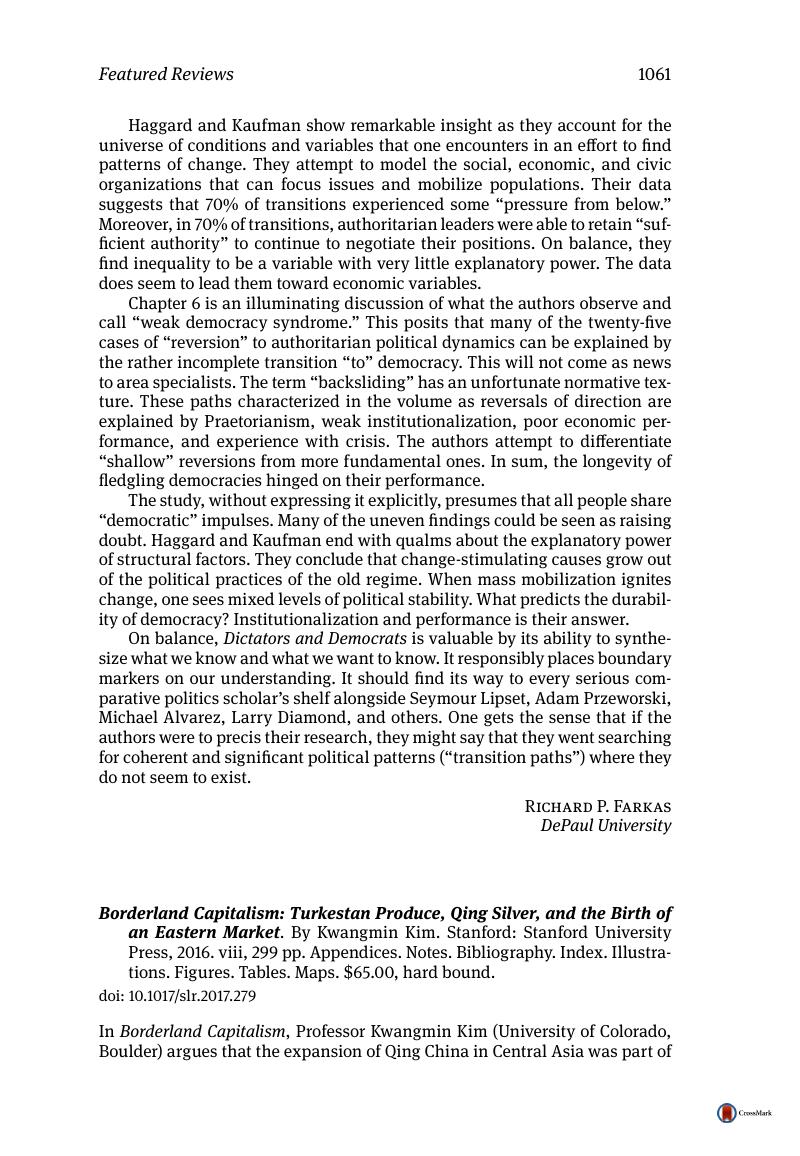No CrossRef data available.
Published online by Cambridge University Press: 31 January 2018

1. Although Kim does not use this term, I follow Rian Thum's The Sacred Routes of Uyghur History (2014) in using Altishahr (“Six Cities”) for the Tarim Basis oases and Altishahri for the inhabitants. They called themselves “Musulman” and were called Huizi (Chinese) or Hoise (Manchu) by the Qing rulers.
2. See Duman, L.I., “Feodal΄nyi institut ian΄tsi v Vostochnom Turkestane v XVIII veke,” Zapiski Instituta Vostokovedeniia Akademii Nauk SSSR 3 (1935), 87–100 Google Scholar. Duman (93) notes the Chinese characters for this term are rather variable: yanqi 煙齊, yanqi 彥齊, or yangqi 洋起. I would like to thank David Brophy for bringing this article to my attention. It is a measure of Kim's important and original contribution that standard English-language works on Qing rule in Xinjiang do not even mention the yanqi institution. Ildiko Beller-Hann's ethnography, Community Matters in Xinjiang, 1880–1949 (2008), 138, touches on it under the name čakar or yänči.
3. The agricultural expansion visible in Qing Altishahr was linked to a similar agricultural transformation in the Ferghana valley during the late eighteenth and nineteenth centuries (106–07); see also Levi, Scott, “India, Russia and the Eighteenth-Century Transformation of the Central Asian Caravan Trade,” Journal of the Economic and Social History of the Orient 42, no. 4 (1999): 519–48CrossRefGoogle Scholar.
4. See “Han Buddhism and the Western Region,” in Thought and Law in Qin and Han China, ed. W.L. Idema and E. Zurcher (1990), pp. 158–82. Yu Taishan in his 2003 work, Liang Han Wei Jin Nanbei chao zhengshi Xiyu zhuan yanjiu, pp. 313–26, has justly criticized aspects of Zurcher's argument, but even his figures show major increases in the Tarim Basin.